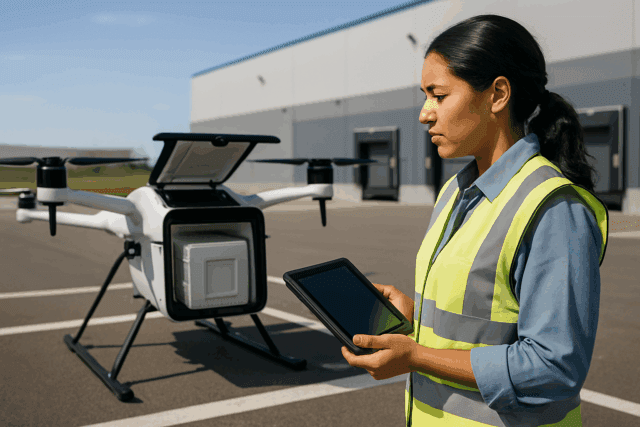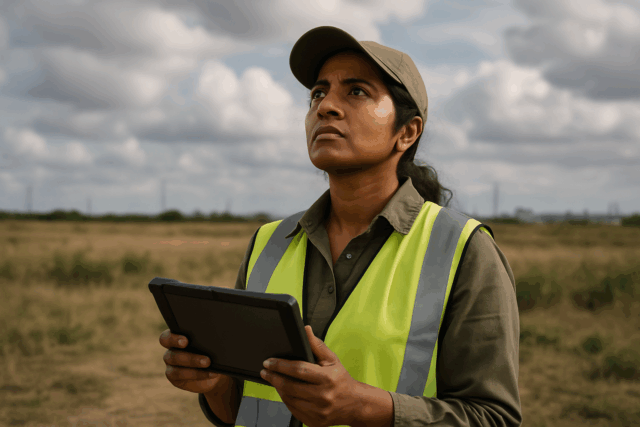The horizon of logistics is expanding, with drone delivery services poised to revolutionize everything from urban last-mile delivery to critical medical supply transport. As this technology matures, attention is increasingly turning to the vast, largely unregulated expanse of international waters, where the potential for rapid, efficient delivery to ships, offshore platforms, or remote islands is immense. However, extending drone operations into this global common presents a complex tapestry of legal implications that existing international frameworks are still grappling to address.
Defining International Waters and the Legal Vacuum for UAVs
International waters, often referred to as the high seas, are those parts of the sea not included in the territorial sea or internal waters of any state. Governed primarily by the United Nations Convention on the Law of the Sea (UNCLOS), these areas are open to all states for various freedoms, including navigation and overflight. However, UNCLOS was drafted long before the advent of unmanned aerial vehicles (UAVs) or drones, leading to significant ambiguities regarding their legal status and operations. Similarly, international aviation law, largely based on the 1944 Chicago Convention, primarily regulates manned aircraft and struggles to fully accommodate the unique characteristics of drones.
There are currently no common or international rules governing the use of drones in international waters. While the International Civil Aviation Organization (ICAO) has begun exploring drone technology and issued reports and circulars, individual national regulators are largely responsible for implementing regulations, particularly for Beyond Visual Line of Sight (BVLOS) operations. This creates a patchwork of regulations that can be difficult to navigate for operators venturing into international airspace.
Jurisdictional Labyrinth: Sovereignty and the High Seas
One of the foremost challenges lies in determining jurisdiction when drones operate over international waters. While UNCLOS grants freedom of overflight, the specifics for unmanned aircraft are not clearly delineated.
Flag State Authority
For drones launched from a registered vessel on the high seas, the flag state of that vessel would generally retain jurisdiction over the drone as it is considered a component of the vessel’s operation. However, if the drone itself is registered, its country of registration would also have a claim to jurisdiction. US-registered civil aircraft, for example, must comply with ICAO rules even when operating over the high seas. This can lead to complex situations if the drone’s registration differs from that of its launching platform or operating company.
Unclear Status: “Vessel” or “Aircraft”?
A fundamental legal ambiguity is whether a maritime drone should be classified as a “vessel” under UNCLOS or an “aircraft” under international aviation law. UNCLOS’s definition of “vessel” is broad but often presupposes crewing, which uncrewed maritime systems (maritime drones) do not have. This lack of clear classification creates significant uncertainty regarding the application of various international legal provisions, including rights of navigation and sovereign immunity. The US Naval War College, for instance, has attempted to unilaterally define terms related to unmanned systems in its “Commander’s Handbook on the Law of Naval Operations”.
Safety and Air Traffic Management
The safety of drone delivery in international waters raises critical questions regarding air traffic control and collision avoidance.
Integration with Manned Aviation
International aviation law requires all aircraft to operate safely, and ICAO sets standards for air navigation. Drones, especially those flying Beyond Visual Line of Sight (BVLOS), must meet communication, navigation, and surveillance requirements, and have appropriate operational certification for the airspace they operate in. The absence of comprehensive, universally adopted Uncrewed Traffic Management (UTM) systems for international airspace means that integrating delivery drones with existing manned aircraft routes presents significant collision risks.
Navigation and Performance Requirements
All aircraft, manned or unmanned, must meet navigation performance requirements for the specific airspace in which they operate. While small drones operating within Visual Line of Sight (VLOS) might not need advanced on-board navigation, BVLOS operations over international waters would require sophisticated navigation capabilities to ensure safety and prevent interference with other maritime or aerial traffic.
Liability for Accidents and Damages
Determining liability in the event of a drone accident over international waters is another complex area.
Negligence and Product Liability
If a drone crashes or causes damage, liability claims could arise from negligence (e.g., operator error, inadequate maintenance) or product liability (e.g., defective drone, manufacturing flaws). Commercial drone operators are strongly advised to secure dedicated drone liability insurance, as general liability policies often exclude aviation risks. Such insurance typically covers third-party claims for property damage or injury, with coverage limits ranging from hundreds of thousands to millions of dollars.
Admiralty Jurisdiction
Incidents involving drones over navigable waters could potentially fall under admiralty law, which has distinct rules and remedies compared to standard aviation or state laws. While recreational drone flights might not always meet the “maritime nexus” requirement for admiralty jurisdiction, drone operations that interfere with vessel navigation, port operations, or maritime commerce could trigger it. This adds another layer of legal complexity for drone delivery services at sea.
Security Concerns and Illicit Activities
The deployment of drones for delivery in international waters also presents significant security challenges.
Smuggling and Unauthorised Surveillance
Drones could be exploited for illicit activities such as smuggling prohibited goods or conducting unauthorized surveillance of vessels or sensitive installations. The dual-use nature of drone technology means that commercially available systems can be modified for malicious purposes, posing threats to national security and critical infrastructure.
Cyber Threats
Drone delivery systems are susceptible to cyber threats like hacking, data breaches, spoofing, and GPS jamming. These vulnerabilities could lead to delivery disruptions, theft, or even drone hijacking, compromising not only the cargo but also sensitive data about customers and operations. Robust cybersecurity measures, including encryption and intrusion detection systems, are essential.
Environmental and Ethical Considerations
While drones are often touted for their potential environmental benefits, their widespread use in international waters could also raise new concerns.
Noise Pollution and Wildlife Impact
The continuous operation of delivery drones could contribute to noise pollution, potentially disrupting marine wildlife, especially in ecologically sensitive areas. The environmental impact also extends beyond operational emissions to include the energy-intensive processes of drone manufacturing, maintenance, and disposal.
Data Privacy
Drones equipped with cameras or sensors could inadvertently or intentionally collect personal data, raising privacy concerns. Operators must comply with data privacy regulations like GDPR or CCPA if personal data is transmitted.
The Path Forward: Towards International Harmonization
The current legal landscape for drone delivery in international waters is fragmented and often ambiguous. The lack of clear definitions for drones within existing international conventions like UNCLOS and the Chicago Convention creates a “legal vacuum”.
For drone delivery to truly flourish globally, a collaborative effort is needed to develop a comprehensive international legal framework. This would involve:
- Clear Classification: Establishing whether drones are considered “aircraft,” “vessels,” or a new category altogether under international law.
- Standardized Regulations: Developing common rules for air traffic management, safety standards, operator licensing, and registration that apply consistently across international airspace and waters.
- Liability Regimes: Establishing clear liability frameworks for accidents and damages that account for the unique characteristics of drones.
- Security Protocols: Implementing international standards and cooperation mechanisms to mitigate the risks of malicious drone use.
- Environmental Guidelines: Developing best practices to minimize the environmental footprint of drone delivery operations.
Companies like Wilhelmsen Ships Services and Airbus have already trialed drone deliveries to vessels, demonstrating the practical potential. Organizations like the European Maritime Safety Agency (EMSA) are also utilizing remotely piloted aircraft for environmental protection and maritime law enforcement. As the maritime industry increasingly adopts drone technology for tasks like inspections, security, and supply delivery, the urgency for a robust and harmonized international legal framework grows. Without it, the promising future of drone delivery in international waters will remain hampered by legal uncertainty and potential geopolitical tensions.





